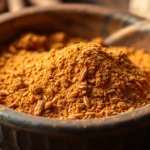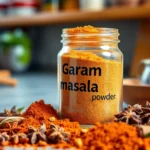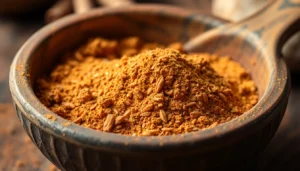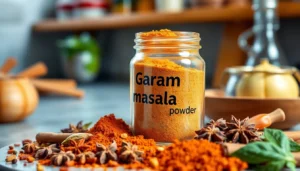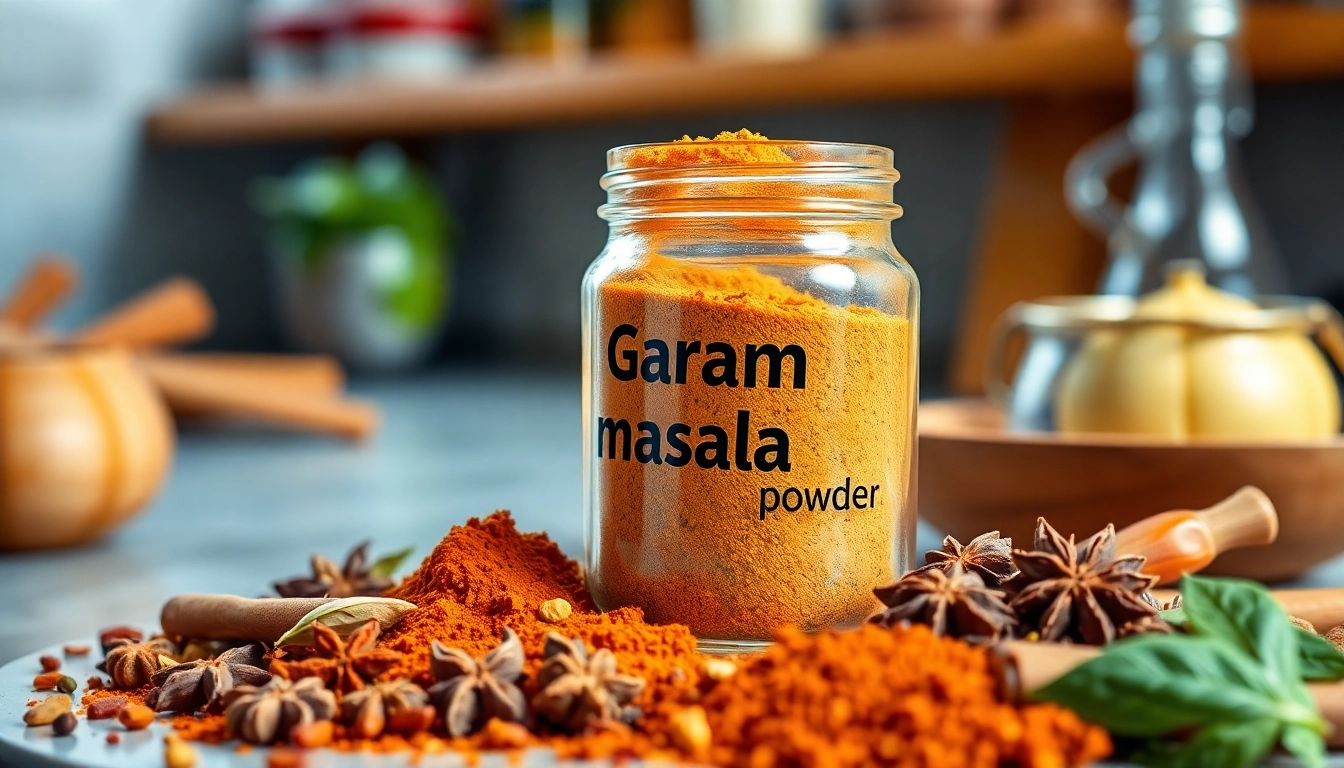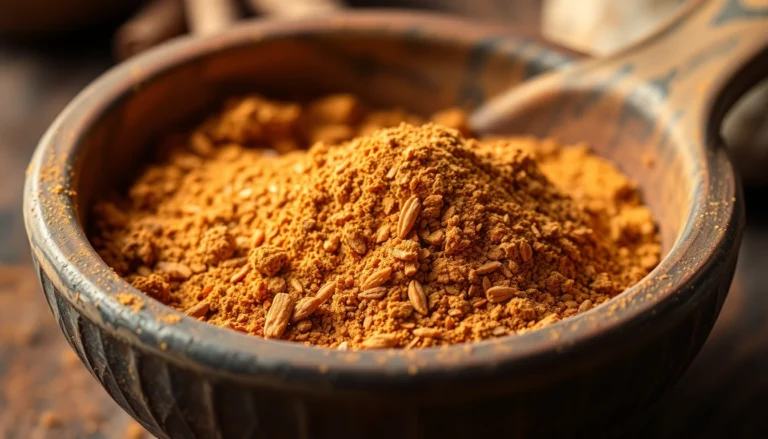Understanding Garam Masala Powder and Its Culinary Significance
Garam Masala Powder is a quintessential spice blend that holds a revered position in Indian cuisine and many other culinary traditions across South Asia. Its rich aroma and complex flavor profile elevate dishes, adding depth and warmth that are characteristic of traditional Indian cooking. As a versatile spice, Garam Masala is used in a variety of recipes—from hearty curries to delectable snacks—making it an essential pantry staple for both home cooks and professional chefs.
At Garam Masala Powder, we pride ourselves on crafting authentic blends that maintain the integrity of traditional recipes while adhering to the highest standards of quality and safety. Our commitment to excellence has earned us certifications and a presence at numerous major food exhibitions worldwide, which further underscores our reputation as a trusted manufacturer and exporter of premium spices.
What Is Garam Masala Powder and Its Traditional Use
Garam Masala, translating to “hot spices” in Hindi, refers to a carefully curated mixture of ground spices used to flavor a variety of dishes. Unlike many western spice blends, Garam Masala is not a single herb but a sophisticated combination of ingredients such as cumin, coriander, cardamom, cinnamon, cloves, and black pepper. This blend is typically added during cooking or as a finishing touch to enhance flavor and aroma.
Traditionally, Garam Masala is integral to Indian culinary practices, especially in North Indian, Mughlai, and Kashmiri cuisines. Its use varies regionally; in some areas, it’s added early during the cooking process to allow flavors to meld, while in others, it’s sprinkled on at the end for a burst of aroma. The versatility of Garam Masala makes it suitable for preparing rich curries, meat dishes, vegetables, lentils, and even rice preparations.
For those interested in exploring authentic flavors, choosing a high-quality Garam Masala Powder from a trusted manufacturer is vital. Our products are formulated based on traditional recipes that have been passed down generations, ensuring an authentic taste in every pinch.
Key Ingredients and Regional Variations of Garam Masala
The core ingredients of Garam Masala can vary depending on regional tastes and available spices, but some components are universally common. These include cumin, coriander, cardamom, cinnamon, cloves, and black pepper. However, regional variations like the Kashmiri blend may incorporate fennel, mace, or nutmeg, while South Indian versions might emphasize more curry leaves or star anise.
In North India, Garam Masala often features a warm, slightly sweet aroma from cinnamon and cloves, ideal for rich gravies and meat curries. Conversely, a South Indian blend might have a sharper, more pungent profile with additional spices like fennel and coriander seeds roasted to intensify flavor. The spice blend can also be toasted before grinding to unlock more aromatic oils, thereby enhancing the depth of flavor.
Our manufacturing process meticulously preserves these regional nuances, combining traditional recipes with modern techniques. This ensures each batch maintains authentic flavor profiles, providing consumers and culinary professionals with a consistent, high-quality product—whether the formulation is more robust or subtly nuanced.
Health Benefits and Nutritional Value of Garam Masala
Beyond its culinary appeal, Garam Masala offers several health benefits attributable to its constituent spices. Cumin and coriander aid digestion and possess anti-inflammatory properties. Cloves and cinnamon are rich in antioxidants, which help combat oxidative stress in the body. Black pepper can enhance nutrient absorption, making the meal more nutritious overall.
Incorporating Garam Masala into your diet may support metabolic health, improve digestion, and bolster immunity. Its antioxidant components contribute to reducing the risk of chronic illnesses such as cardiovascular disease and certain cancers. Additionally, traditional medicine systems like Ayurveda utilize Garam Masala ingredients for their warming effects and potential to invigorate the body’s natural defenses.
When sourcing Garam Masala, it is imperative to select products that retain their freshness and aromatic quality. Using freshly ground and properly stored spices ensures maximum health benefits and flavor retention.
Choosing and Buying High-Quality Garam Masala Powder
Factors to Consider When Selecting Garam Masala
The quality of Garam Masala depends on several critical factors. First, the freshness of spices is paramount; stale or old spices lose aroma and flavor. Second, the purity of the ingredients matters—adulteration can compromise both taste and health. Third, the consistency of the grind influences how well flavors are released during cooking.
It is essential to choose products from reputed manufacturers who adhere to strict quality controls, certifications, and hygienic processing standards. Certifications like ISO, FSSAI, and organic labels further confirm product authenticity and safety.
How to Identify Authentic and Fresh Garam Masala
Authentic Garam Masala is characterized by a vibrant aroma, a rich, balanced flavor, and a fine powder consistency. Check for a bright, fresh scent—if it smells dull or musty, it may be stale or adulterated. Packaging should be airtight and protective from light and moisture.
Buying from trusted brands like Spice Nest ensures you receive products that are carefully manufactured, tested, and certified. Our Garam Masala is prepared from the finest, ethically sourced spices, ensuring authenticity and quality with every batch.
Trusted Brands and Certifications for Garam Masala Powder
Look for reputable brands with a proven track record in spice manufacturing. Certifications such as ISO 9001, HACCP, organic certificates, and FSSAI compliance are indicators of quality assurance. Spice Nest stands out by offering certified, food-grade Garam Masala Powder developed through stringent quality checks and advanced processing techniques.
Investing in certified products guarantees not only premium flavor but also safety and compliance with international export standards—making our Garam Masala a preferred choice for global markets.
Best Practices for Cooking with Garam Masala Powder
Incorporating Garam Masala into Indian Recipes
To maximize its flavor, Garam Masala should be added at specific stages during cooking. Typically, it is used in the final stages of cooking to preserve its aromatic qualities—adding a teaspoon during the last 5-10 minutes of simmering can unlock its full potential. For richer dishes like curries or biryanis, pre-toasting the spice blend in a dry pan for a few seconds before adding it to the dish enhances aroma and flavor.
Additionally, some chefs prefer to mix Garam Masala with oil or ghee before adding it to dishes, as this helps release essential oils, intensifying the spice’s fragrance.
Tips for Enhancing Flavor without Overpowering
Balance is key when using Garam Masala. Start with small quantities—typically ½ to 1 teaspoon per serving—and taste as you go. Adjust according to preference and the dish’s intensity. Remember that the flavor of Garam Masala can intensify upon cooking, so avoid overestimating initially.
For delicate dishes, a light sprinkle at the end of cooking preserves the fresh aroma, while for hearty stews, a slightly larger quantity can be used during cooking.
Storing Garam Masala for Maximum Freshness
Proper storage is essential to maintain the potency of Garam Masala. Keep the spice in an airtight container away from heat, light, and moisture. Using amber glass jars or metal tins is recommended over plastic containers. Store in a cool, dark place—such as a pantry shelf—to prevent degradation of flavor and aroma.
Regularly check stored spices for freshness, and consider grinding whole spices periodically to create custom blends that offer peak aroma and flavor.
Creative Uses and Innovative Recipes Featuring Garam Masala
Garam Masala in Soups, Stews, and Curries
Garam Masala can be a transformative addition to various broth-based and thick dishes. Adding it during the simmering phase of a lentil soup or a vegetable stew imparts warmth and depth. It pairs exceptionally well with ingredients like chickpeas, potatoes, and spinach, enhancing the overall complexity of the dish.
Pairing Garam Masala with Vegetables and Meats
For meats such as chicken, lamb, or beef, a marinade with Garam Masala, yogurt, and lemon juice can tenderize and flavor the proteins. Vegetables like roasted cauliflower, carrots, and sweet potatoes benefit from a light dusting of Garam Masala before roasting, yielding a caramelized, aromatic effect.
Unique Twists: Snacks and Beverages with Garam Masala
Innovative culinary applications include sprinkling Garam Masala on popcorn, mixing it into trail mixes, or adding a pinch to beverages like chai or spiced milk. Recent trends also explore its use in creating go-to dips, chutneys, and even infused oils to diversify flavor profiles across dishes.
Performance Metrics and Feedback for Optimal Result
Monitoring Flavor Quality and Consumer Preferences
The success of using Garam Masala hinges on its flavor consistency and alignment with consumer preferences. Regular sensory evaluations—aroma, taste, and appearance—should be conducted to ensure quality. Collect feedback from customers or taste testers, noting preferences for milder versus more pungent blends, and adjust formulations accordingly.
Adjusting Quantity for Different Dishes
While a general guideline is ½ to 1 teaspoon per serving, some recipes may require more or less depending on ingredient strength and desired flavor intensity. Record adjustments and their outcomes to refine usage for future dishes—this data-driven approach helps in maintaining consistency and high standards.
Gathering Customer Feedback for Product Improvement
Active engagement with end users provides invaluable insights. Surveys, tasting sessions, and online reviews highlight flavor preferences, aroma expectations, and potential enhancement areas. Use this information to innovate and optimize your Garam Masala offerings, ensuring your products meet evolving tastes and quality standards.
